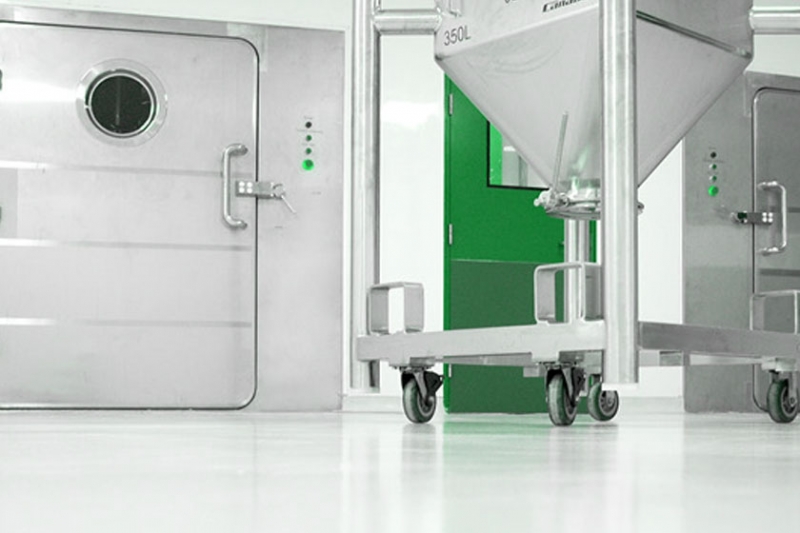1) The existing floor, while conductive, may not meet increasingly stringent cleanroom criteria. Some PVC/vinyl tile is known for out-gassing and plasticizer migration. The material loss from the floor can contaminate electro-optics or giant magnetoresitive (GMR) head manufacturing processes (see Figure 1).
2) The existing flooring material is improperly bonded to the concrete and has become a safety or maintenance problem. This problem could be the result of any number of issues including vapor drive (commonly referred to as moisture problems), alkalinity from the concrete subflooring or poor installation of the original floor.
3) The existing floor is cleanroom compatible, but it has no static control properties. It may not meet the recommended minimum requirements of an ESD prevention program like those described by the ESD Association documents ANSI/ESD S20.20-1999 [Protection of Electrical and Electronic Parts, Assemblies and Equipment] and ANSI/ESD STM7.1-2005 [Resistive Characterization of Materials–Floor Materials]. For example, the present floor may generate over 100 volts when people wearing conductive footwear walk from one place to another or the floor and footwear system resistance may exceed 35 Megohms to ground.
4) The current floor does not meet minimum standards for static control without the use of ESD waxes or dissipative floor finishes. ESD floor finishes are invisible and exhibit temporary characteristics. Because they are indistinguishable from standard floor finishes, waxes and other maintenance-sensitive ESD solutions, verification requires testing the floor on a regular basis using an ANSI/ESD STM7.1-2005 complaint resistance system. Relying on these maintenance chemicals for ESD control can give customers, particularly those who demand rock-solid quality control, the impression that their supplier has little concern for quality. Quality-sensitive customers fear that their parts might be compromised any time their supplier’s janitorial department fails to wax a floor that might be losing conductivity between maintenance intervals.











